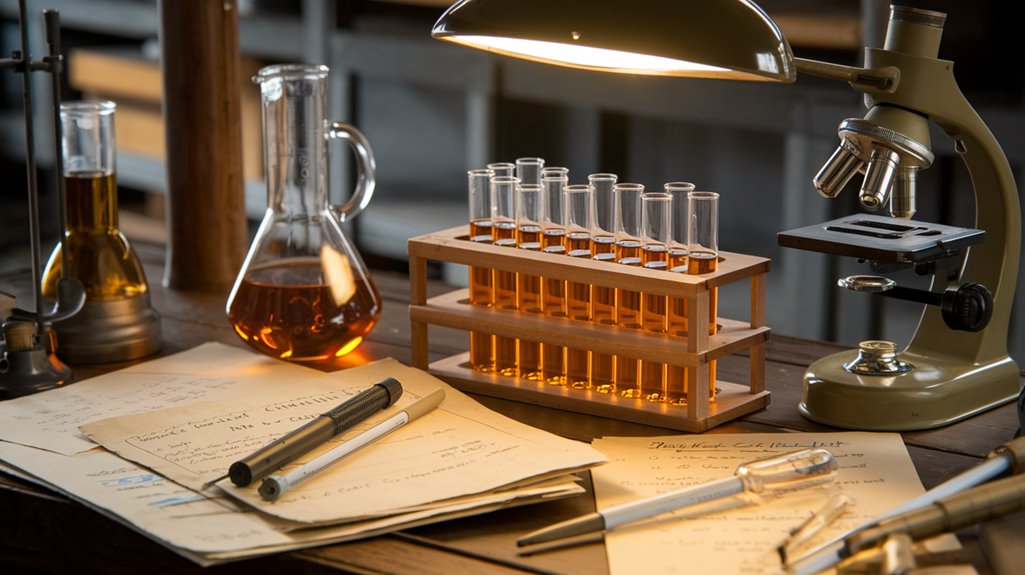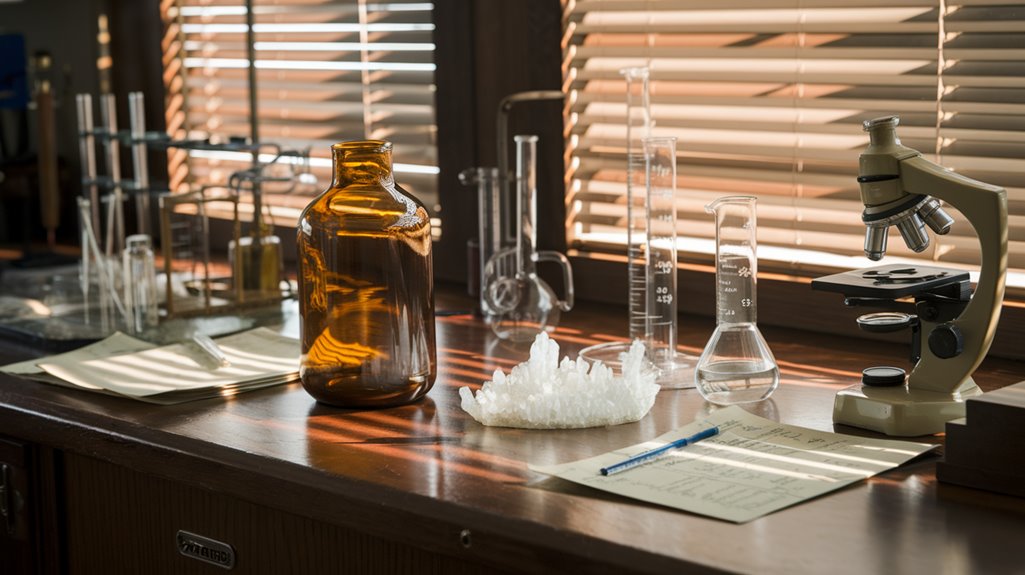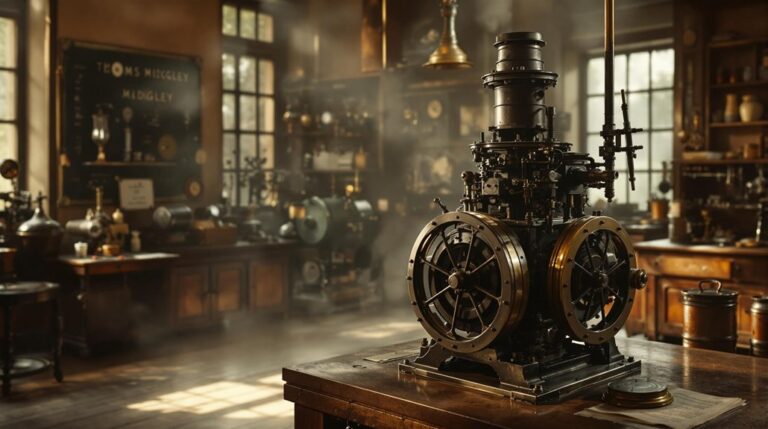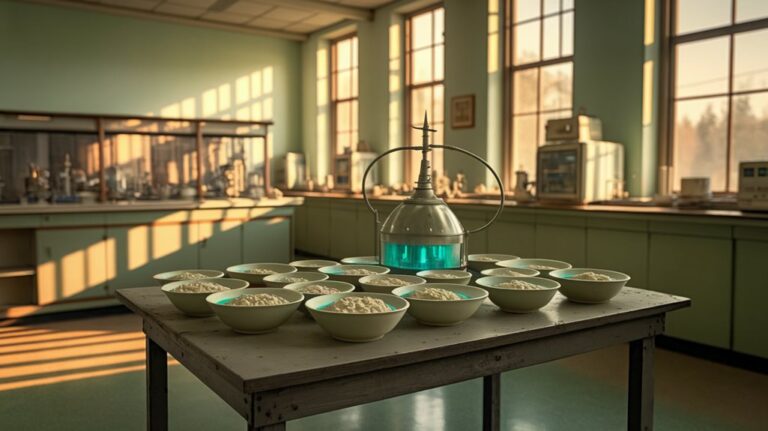From Poison Gas to Chemo: How Warfare Led to Cancer Treatment
Imagine you're a soldier in the trenches of World War I when a mysterious yellow-green cloud drifts across the battlefield. You wouldn't know it then, but that terrifying weapon would later save millions of lives. It's one of history's most striking paradoxes: how a devastating chemical weapon transformed into a cornerstone of modern cancer treatment. You're about to discover how humanity's darkest moments led to one of its brightest medical breakthroughs.
The Deadly Discovery of Mustard Gas
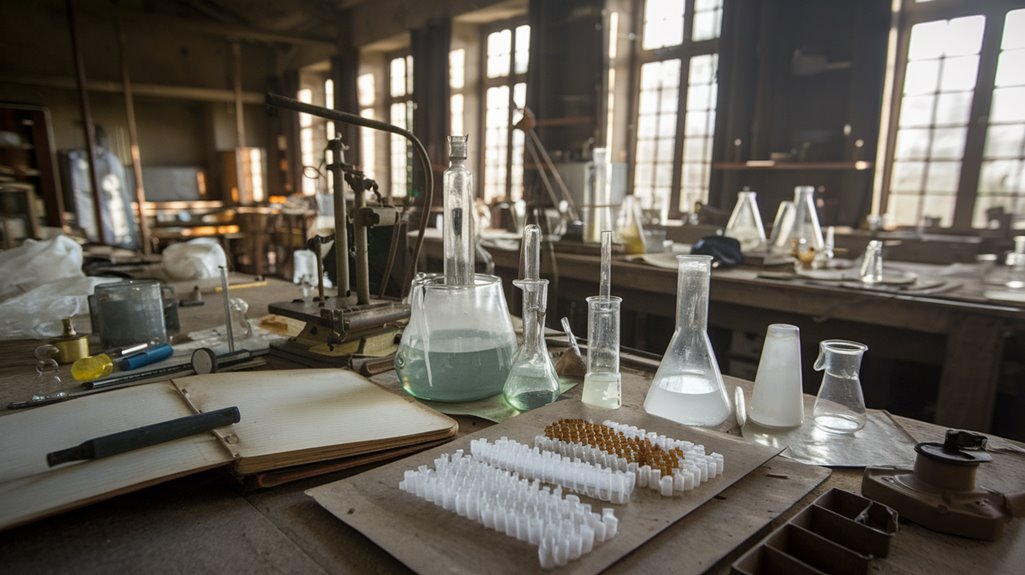
While mustard gas would later revolutionize cancer treatment, its initial discovery revealed a terrifying chemical weapon. When British chemist Frederick Guthrie first synthesized it in 1860, he experienced its devastating effects firsthand, marking the beginning of its toxic legacy in warfare.
You'll find the chemical's evolution into a weapon of mass destruction took a dark turn in 1917 when Germany deployed it during World War I. The Germans released this deadly agent through various methods, including aircraft sprays, bombs, and shells. The chemical agent produced a distinctive faint garlic odor, making its presence known to soldiers on the battlefield.
While the death rate among exposed soldiers was relatively low at 2-3%, mustard gas left an unprecedented trail of casualties. Over 120,000 soldiers suffered its effects during WWI, with many permanently removed from service due to severe injuries and lasting health complications. Scientists later discovered that mustard gas caused toxic changes in bone marrow, leading to groundbreaking research in cancer treatment.
A Naval Accident That Changed Medicine
In a twist of historical irony, the tragic bombing of Bari harbor in 1943 led to one of medicine's most significant breakthroughs.
When German bombers struck 17 Allied ships, they unknowingly triggered a naval disaster that would revolutionize cancer treatment.
As survivors arrived at medical facilities, doctors were puzzled by their unusual symptoms. The patients displayed blisters, severe eye pain, and respiratory issues that didn't match typical combat injuries.
Lt. Col. Stewart Francis Alexander's investigation revealed the shocking truth: mustard gas from a damaged cargo ship had exposed the sailors.
While documenting the gas's effects on white blood cells, researchers made a groundbreaking connection. This deadly weapon could potentially fight cancer. Researchers Goodman and Gilman would later pioneer the first chemotherapy treatment using nitrogen mustard.
Their work led to the development of chemotherapy drugs, transforming a weapon of war into a lifesaving medical treatment. Like this wartime discovery, today's brain trauma indicator blood test represents another military medical advancement that benefits both soldiers and civilians.
Early Breakthroughs in Cancer Treatment
The discovery of nitrogen mustard as a cancer treatment sparked a wave of medical innovations in the 1940s.
You'll find that this breakthrough led scientists to understand how cancer drugs could target rapidly dividing cells by damaging their DNA. This understanding revolutionized tumor biology and opened new paths in cancer genetics research.
The momentum continued when Sidney Farber demonstrated that drugs like aminopterin and methotrexate could effectively treat childhood leukemia. Mechlorethamine's FDA approval in 1949 marked chemotherapy's official entry into cancer treatment.
By 1956, methotrexate achieved the first complete cure of a solid tumor. Scientists then discovered that combining multiple chemotherapy drugs improved outcomes dramatically. The completion of the Human Genome Project in 2003 further accelerated our understanding of cancer genetics and treatment options.
They also found success with adjuvant therapy, using chemotherapy after primary treatment to boost survival rates.
These early breakthroughs laid the foundation for modern cancer treatment protocols you see today.
From Military Secret to Medical Miracle
During World War I, a deadly chemical weapon would unexpectedly revolutionize cancer treatment. When doctors examined soldiers exposed to mustard gas, they noticed something intriguing: the toxic agent greatly reduced their white blood cell counts. The secret potential of this discovery became even more evident after the tragic Bari harbor disaster in 1943.
This military origins discovery caught the attention of researchers Louis Goodman and Alfred Gilman at Yale University. They recognized that this devastating weapon might hold the key to fighting blood cancers like leukemia and lymphoma. These early studies were conducted under the direction of the U.S. Scientific Research office in 1942.
Their first patient, J.D., showed remarkable improvement before eventually relapsing. These chemical innovations, though initially shrouded in military secrecy, sparked a medical revolution.
The research led to the development of nitrogen mustard – the first chemotherapy drug – and paved the way for over 100 different cancer treatments we use today.
The Birth of Modern Chemotherapy
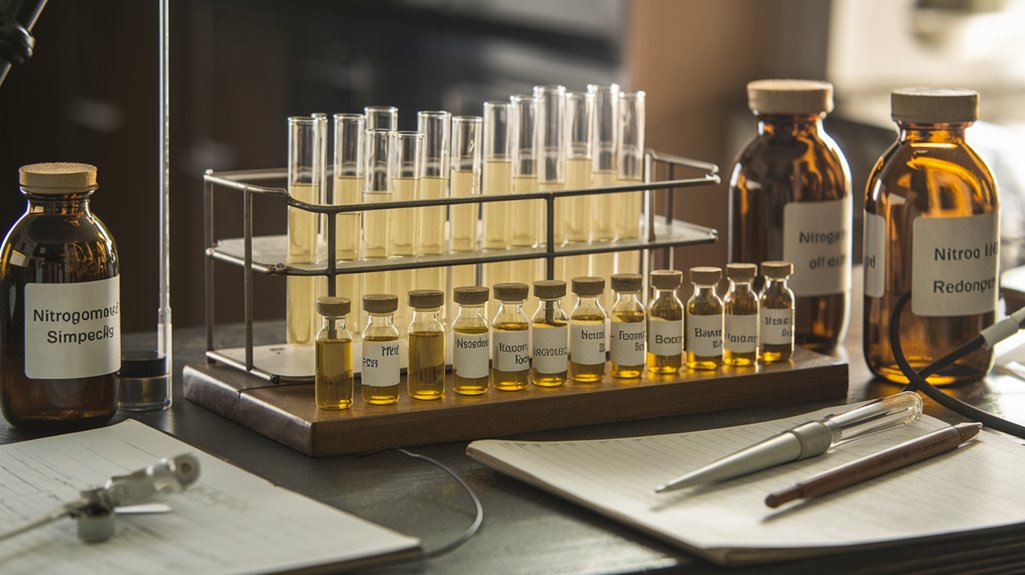
Modern chemotherapy emerged from a groundbreaking series of discoveries in the 1940s and 1950s.
You'll find that cancer research took a significant leap when Yale researchers Goodman and Gilman developed nitrogen mustard in 1942, treating their first lymphosarcoma patient with remarkable initial results. While the patient eventually relapsed, this marked a pivotal moment in therapeutic advancements. Their work stemmed directly from research into chemical warfare agents during World War II. Murray Shear's program at the National Cancer Institute had already screened 3,000 compounds in search of effective treatments.
The field expanded rapidly when Sidney Farber's work with antifolates led to the development of aminopterin and methotrexate.
These drugs proved especially effective against leukemia and solid tumors. By 1956, methotrexate achieved the first cure of metastatic cancer in choriocarcinoma cases.
The introduction of 6-mercaptopurine and combination therapy approaches further revolutionized treatment options, establishing the foundation for modern cancer care protocols you're familiar with today.
War's Unexpected Gift to Medical Science
While warfare brings devastating human costs, it has paradoxically accelerated numerous medical breakthroughs that continue to benefit society today. War medicine has transformed how we treat everything from infections to traumatic injuries.
During the Civil War, innovations in battlefield medicine saw mortality rates from infections plummet from 60% to 3% by the war's end. Under the direction of Major Jonathan Letterman, the Union Army established organized medical triage that revolutionized battlefield care.
You'll find penicillin's mass production during World War II revolutionized bacterial infection treatment, while Vietnam War innovations gave us modern medevac systems and advanced trauma protocols.
The impact of these health innovations extends far beyond the battlefield. Today, you're benefiting from military medical advances whenever you visit a trauma center or receive reconstructive surgery.

